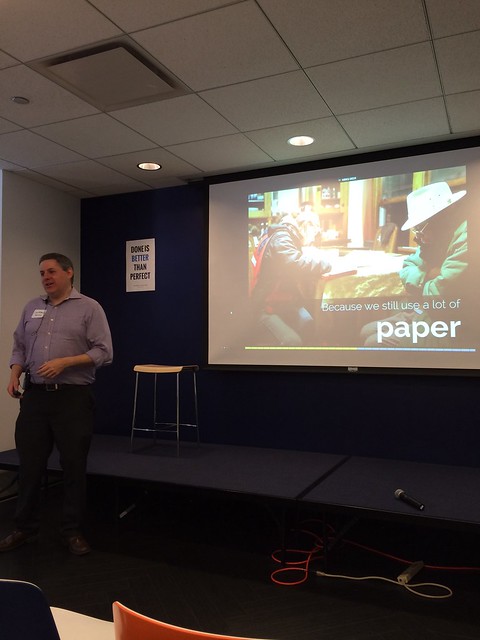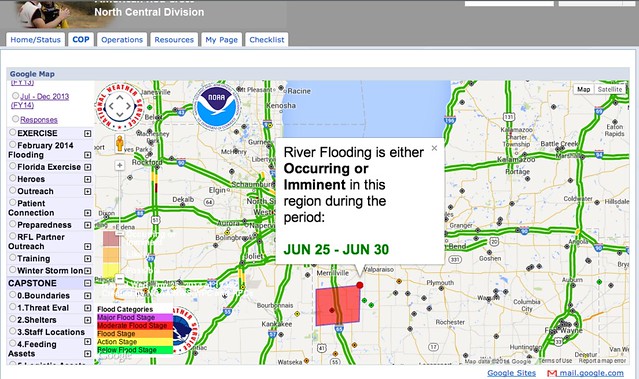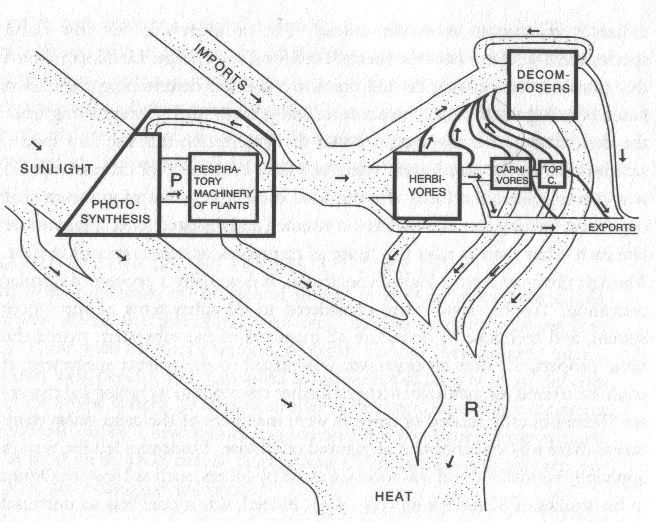This is the second post in a series about takeaways learned from National Day of Civic Hacking in Chicago. These posts will highlight problem sets, current efforts, and how to get involved in future efforts.

At this year’s National Day of Civic Hacking in the Chicago Loop, we had Jim McGowan of the Chicago Area Red Cross describe their work and how it intersects with technology.
In this takeaway post, we’ll describe the problem set, current data, current projects, and possible next steps in creating tools that help to support the work of the Chicago Area Red Cross.
Problem Set:
To talk about what the Chicago Red Cross does, here’s Jim McGowan who serves as their Readiness and Situational Awareness Program Manager. (You can view his slide deck here.)
The Chicago Area Red Cross collects blood, teaches classes, gets emergency messages to military members deployed overseas, responds to major disasters and to provides services to those in smaller everyday disasters like house fires. In order to succeed in their goals, the Red Cross must accomplish a number of tasks on a daily basis. These include:
Volunteer Management: Being able to both recruit volunteers and dispatch them to incidents.
Situational Awareness: Understanding where the resources are, where the volunteers are, where the incidents are, and understanding what is happening with each incident.
Coordination: Not only must the Chicago Red Cross coordinate their own volunteers and resources, but they must also work together with other disaster response organizations such as FEMA, Salvation Army, the National Guard, as well as state and local officials.
Current Data:
The Red Cross uses a number of datasets during an incident. Not all incidents are major disasters, some are everyday disasters like house fires. For example, when they get a call for a house fire, the Red Cross may check data to see if the building is abandoned. (If the house is abandoned, there’s no need to come out.)
Here are some other data sets that would be useful when responding to a disaster:
- Federal Weather Data (Data.gov)
- Fire Incident Case Data (Data.gov)
- Severe Weather Inventory (Data.gov)
- Weather Service Data (Data.gov)
- Earthquake Feeds (Data.gov)
- Tornado Tracks and Icons 1950-2006 (Data.gov)
- Chicago Fire Stations (data.cityofchicago.gov)
- State of Illinois Hospital Directory (data.illinois.gov)
- Manufactured Home Communities (data.illinois.gov)
- Abandoned and Vacant Building Map (data.cityofchicago.org)
Current Efforts:
Currently, the Chicago Red Cross is using a system called DCSops to help manage responses. The project is open source and can be found on the Red Cross’ GitHub page.
DSCOps
DCSOps is used to handle a number of tasks that the Red Cross has to make. The first task is assigning volunteers for various duties. For example, the Red Cross always have volunteer staff on dispatch duty in order to quickly get volunteers to local disasters. To do this, the DCSops integrates with the national Red Cross’ Volunteer Connection application. Using that information, DCSops then can assign people to run dispatch from the app based on the preferences listed in Volunteer Connection.
SitCell

SitCell is an app designed to allow Red Cross staff and volunteers to get a common operating picture. The app uses a variety of external and internal data resources to display information about current incidents. There are limitations to the software in it’s current form. Because it’s using the Google Maps API, it’s limited to displaying about ten data fields at a time.
If you’d like to be more involved in these efforts, feel free to contact Jim McGowan directly at [email protected].






